 |
 |
 |
| |
Missed opportunities for HIV Prevention and Treatment in People Hospitalized with Serious Injection Related Infections: The CHOICE+ Cohort
|
| |
| |
Background:
Harm reduction for persons who inject drugs (PWID) has many components, including HIV testing and Pre-exposure Prophylaxis (PrEP). However, despite the increasing evidence of effectiveness, PrEP remains highly underutilized in these patients at high-risk for infection and subsequent transmission risk to others. Our aim is to identify the gaps in HIV prevention care among a hospitalized PWID population.
Methods:
CHOICE+ is a multisite retrospective cohort study of adults hospitalized with infectious complications of active injection opioid use between 1/1/2018 and 3/31/2022 at four US medical centers. Data were collected by abstraction of the electronic medical record and analyzed by chi-square and multivariate logistic regression.
Results:
1168 (74%) adults with unknown HIV status underwent HIV screening during sentinel admission. For risk comparison, 48% of this cohort had active HCV infection. HIV screening was less likely to occur in PWID who were male (69% vs 78% females), Black (51% vs 78% White), hospitalized < 3 days (56%), on non-medical services (62% vs 75%), and without ID consult (56% vs 79%). Only 3 participants were referred for PrEP, and only 4 initiated PrEP within 1 year of discharge. Additionally, nearly half (49%) of this HIV (-) cohort did not have follow up HIV screening. There were 79 HIV (+) individuals: 66 known HIV (+) and 13 new diagnoses. Forty-five (57%) were on anti-retroviral therapy during hospitalization, 28 (35%) had CD4 < 200, 47 (59%) had detectable viral load, and 49 (62%) were referred for HIV care. However, only 37% were confirmed linked to care. Of those in care, 59% were virally suppressed within 12 months.
Conclusion:
In a cohort of high-risk PWID hospitalized with infectious complications of substance use, there were low rates of HIV screening, PrEP initiation, and referrals for treatment in HIV (-) individuals. The lack of PrEP initiation in this study is unsurprising; however, the absence of referring patients suggests a lack of awareness of increased PrEP availability. More concerning are the gaps in HIV screening among this high-risk cohort. Clinicians must capitalize on opportunities to provide this population with tools to reduce their risks, which includes HIV screening and PrEP.
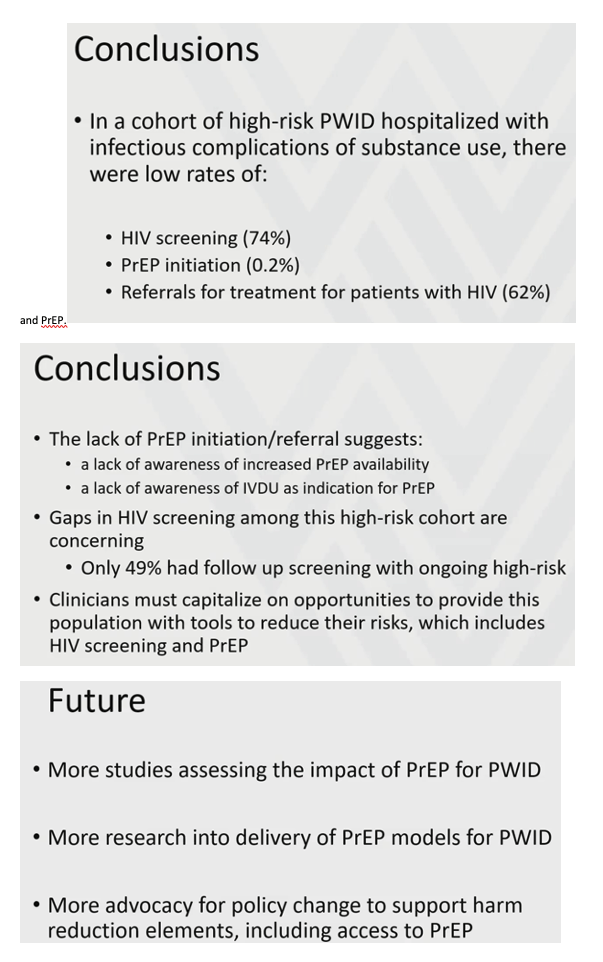

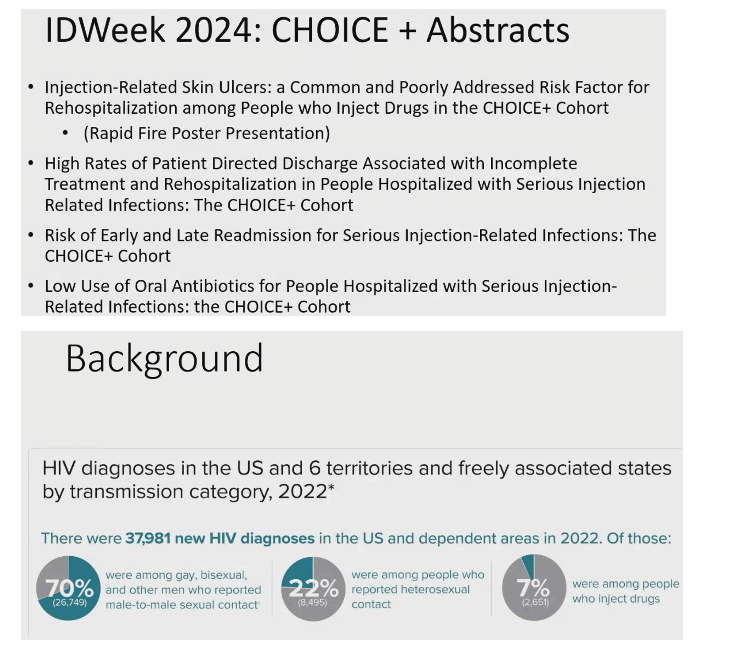
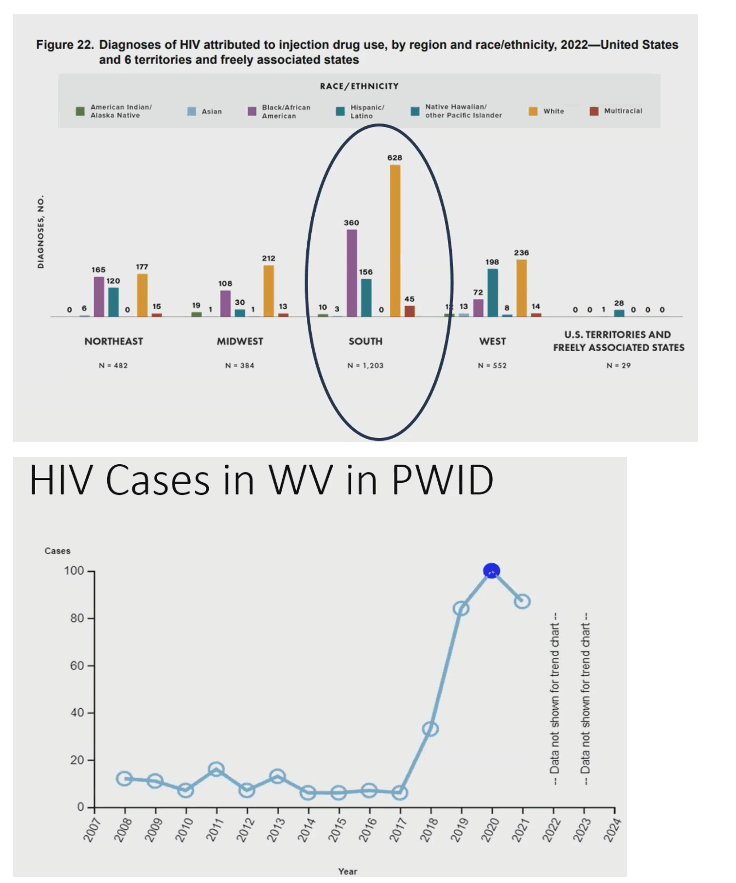
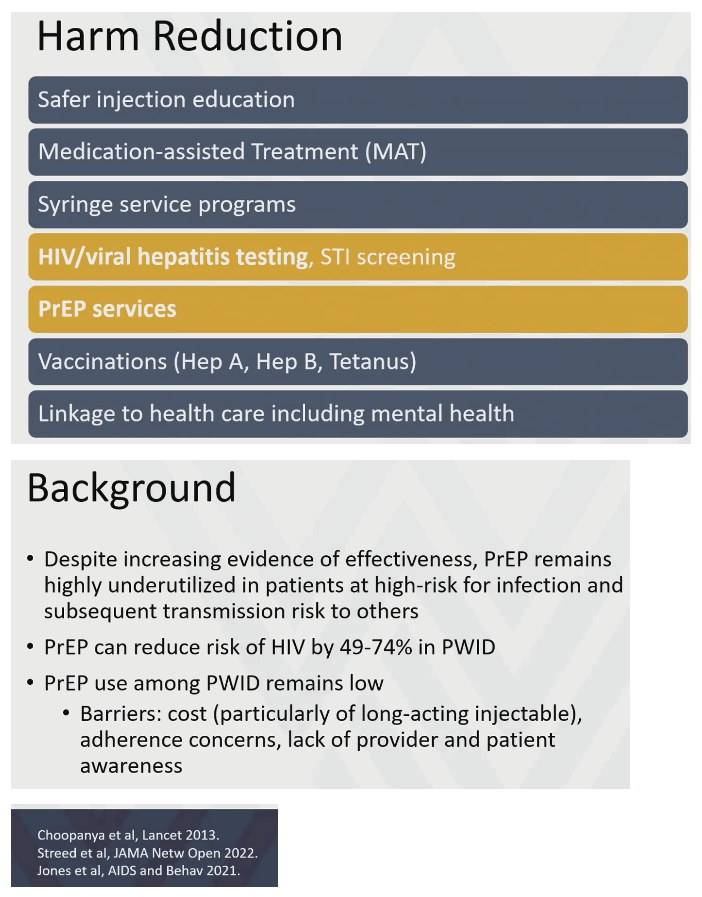
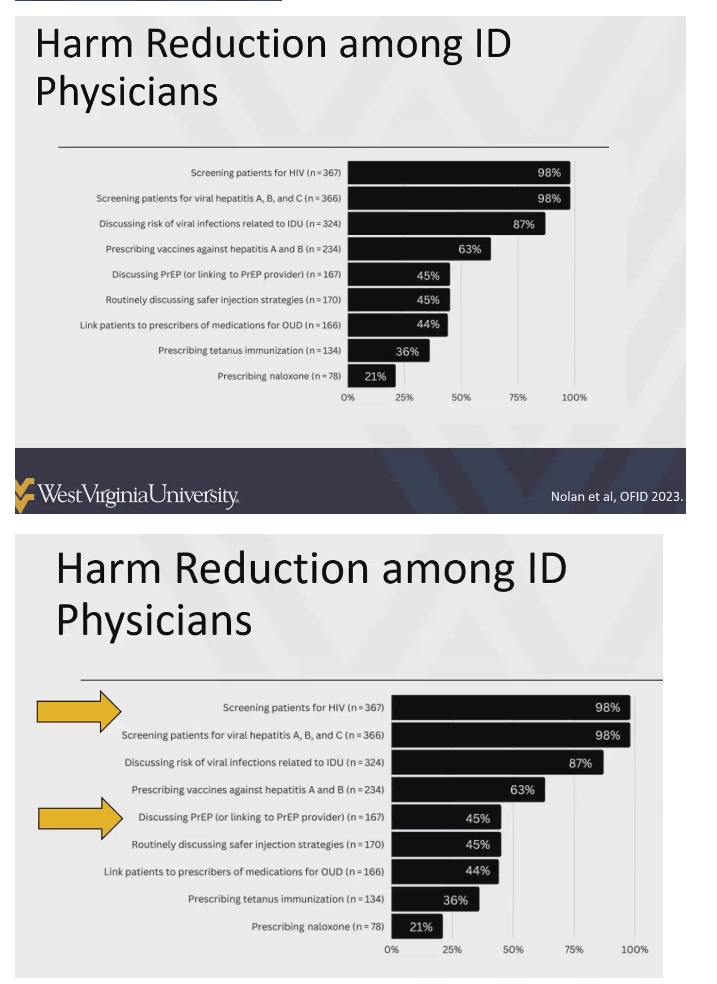
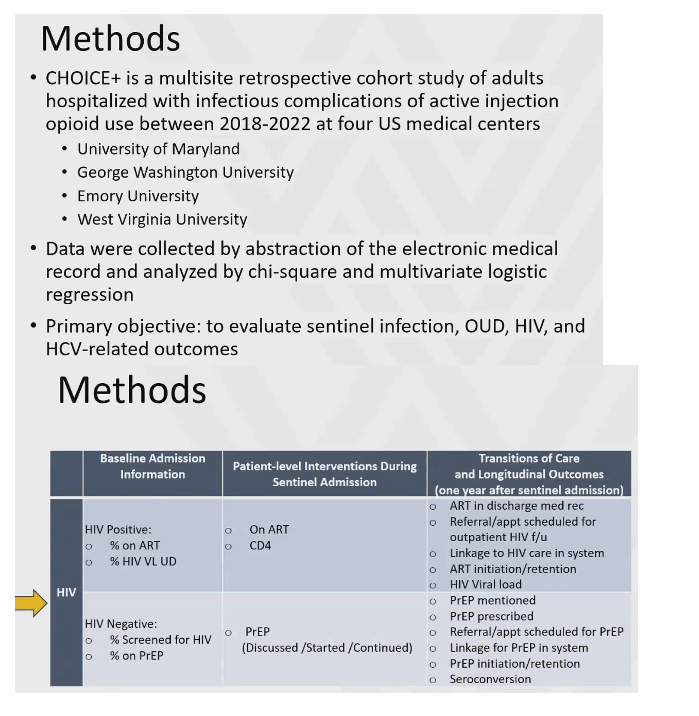
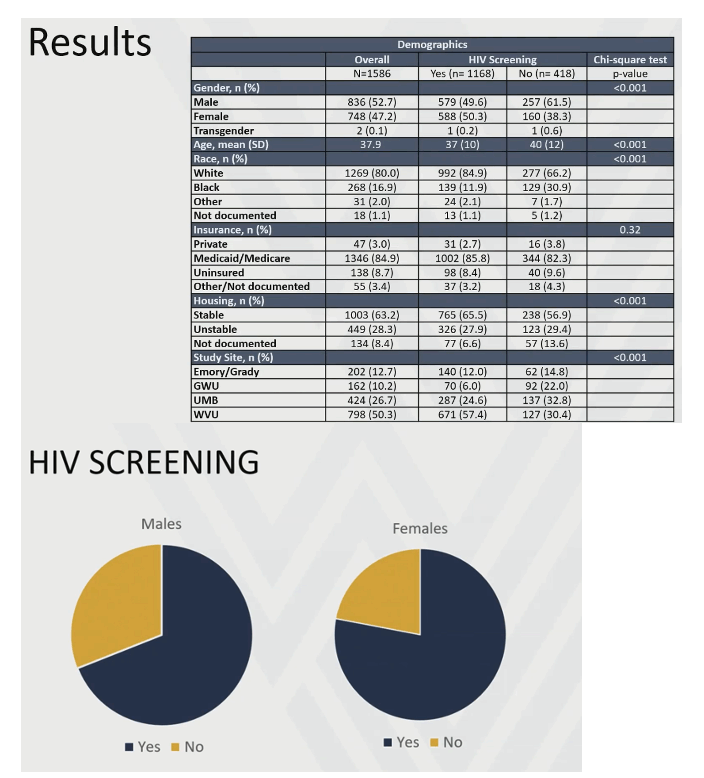

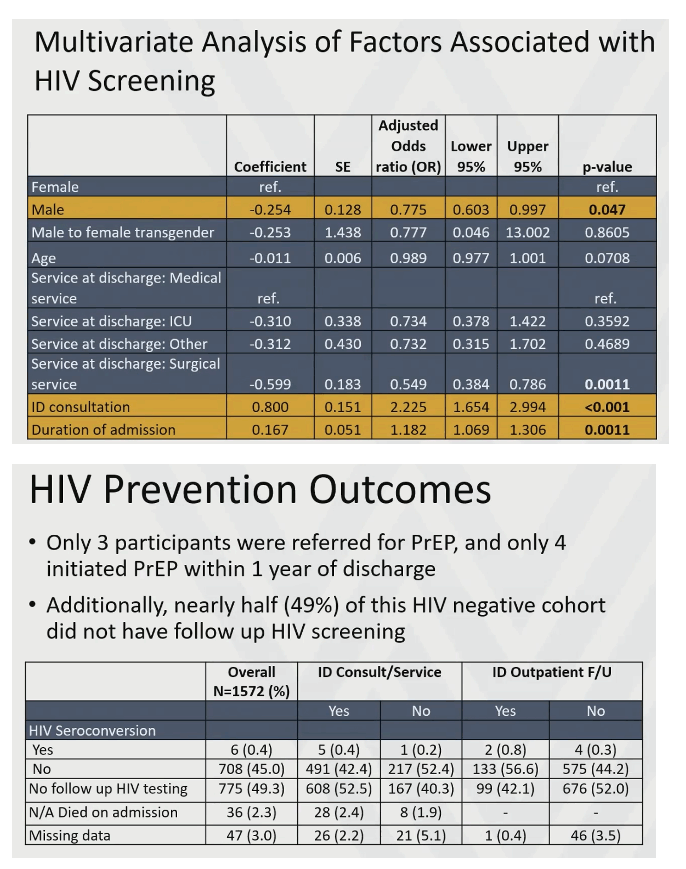
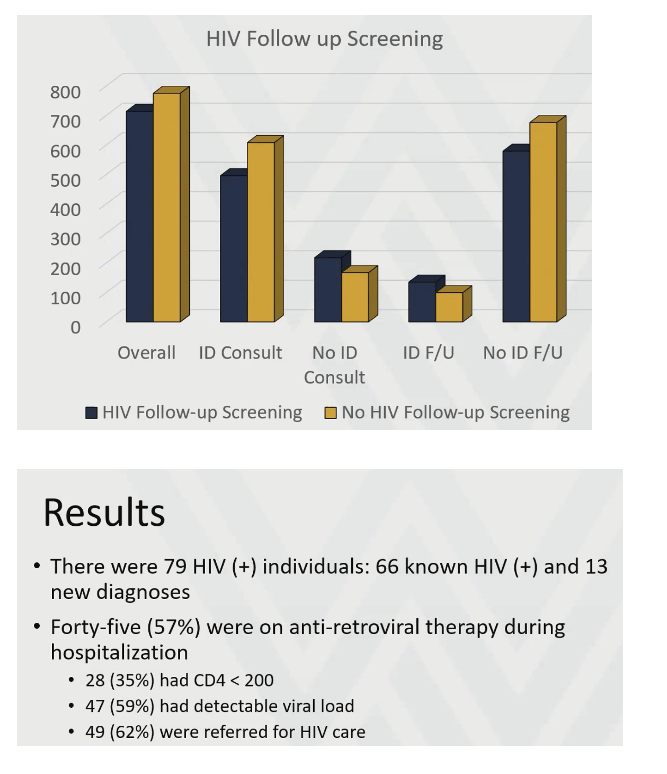
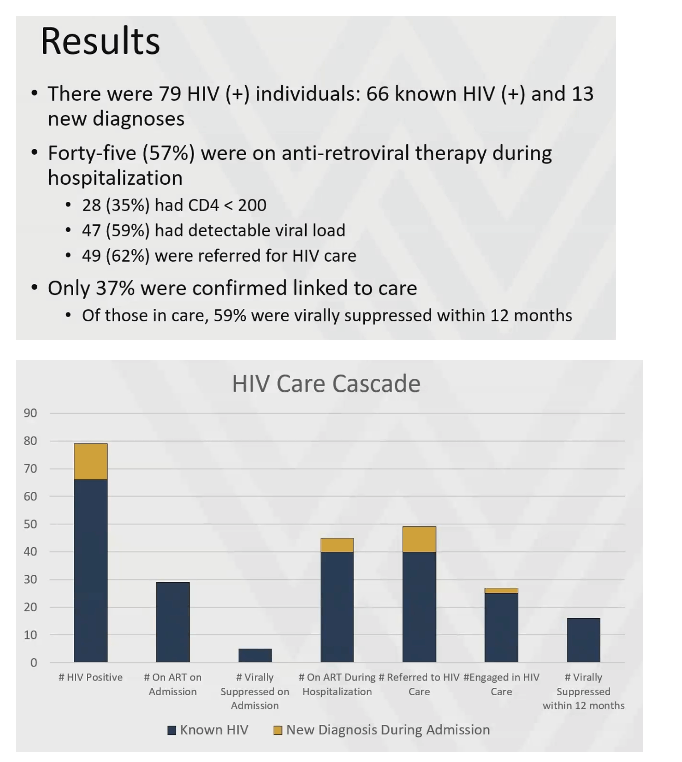
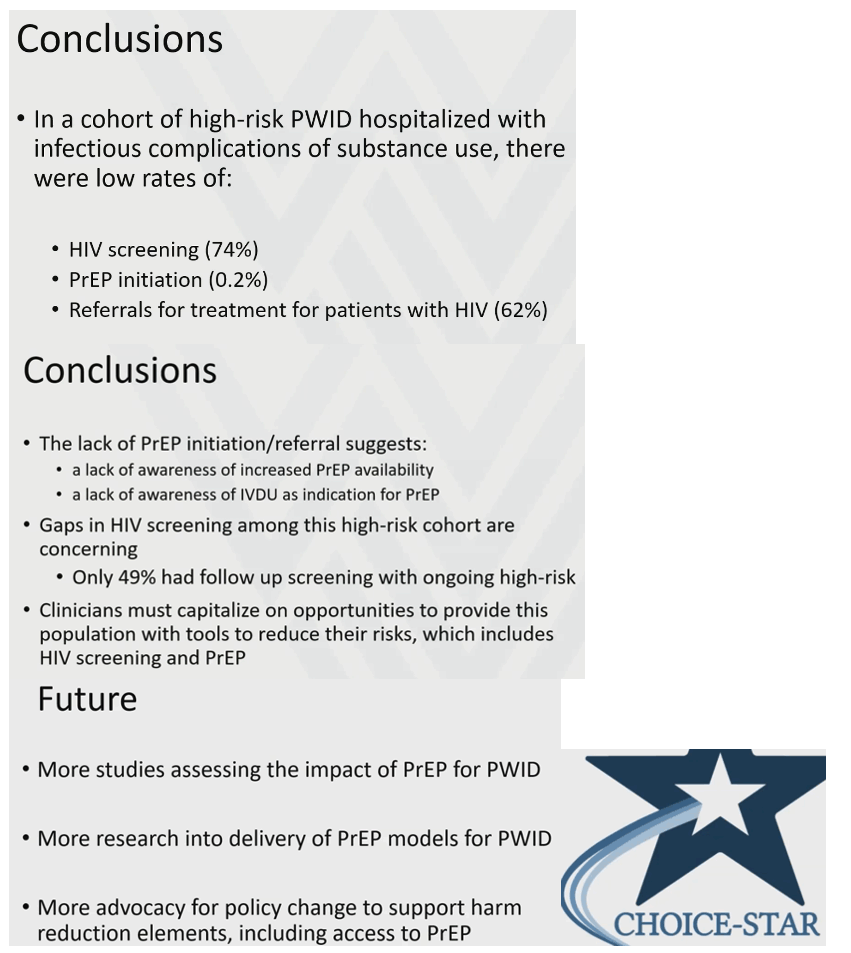
|
| |
|
 |
 |
|
|